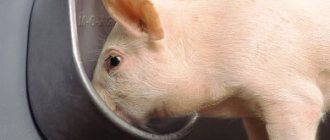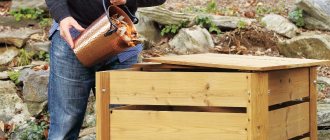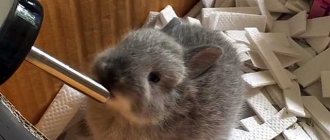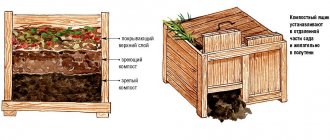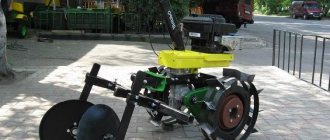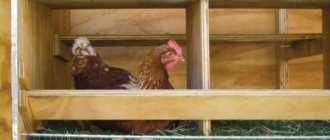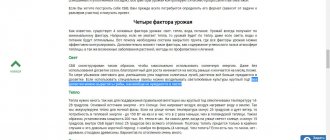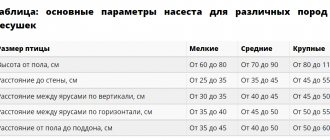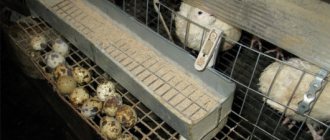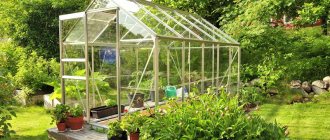To provide themselves and family members with fresh chicken meat and eggs, many people are starting to purchase chickens. Products from birds raised on their own will be much healthier and better than those offered for sale.
For high productivity from raising birds, you need to adhere to certain rules, this applies to food and drink requirements.
In the place where the chickens are located, in addition to food, there must be fresh water. This can be done with the help of a suitable waterer for chickens and hens; you can make them yourself or find them on sale.
The required dosage of water for birds can be different, it depends on: their age, the portion of food they eat, the weather, etc.
However, to prevent dehydration, every adult must drink at least half a liter of water per day. Drip drinkers are made for chickens.
Primary requirements
It doesn’t matter what breed of birds are raised, when making drinking bowls you must follow some rules.
Harmless materials. When making a structure from metal elements, you need to know that they come into contact with certain medications and create chemical compounds that are harmful to the health of the bird. In addition, all sharp parts must be processed to avoid injury to the birds.
Pure water. Open drinking bowls often harbor various microorganisms, which ultimately contributes to the development of infections. Designs with an insulated container will help avoid this.
Ease and comfort to use. When filling the drinking bowl, nothing should interfere with this. Changing the water should be an easy, problem-free procedure.
Reliability and stability of the structure. Drinkers must prevent access for unauthorized animals and birds and withstand their pressure.
They must also be resilient. Otherwise, when it turns over, water will flow out of the device, as a result, the birds will remain unwatered, and dampness will develop in their location.
- Characteristics of Shtil saws
How to make a cold smoked smokehouse - various options and detailed instructions on how to make it yourself! (Photo and video)
Form for paths - is it worth using and why?! Find out the answer to this question in the review and see the instructions for working with the form in the photo.
Before you make a drinking bowl, you need to decide on its suitable design.
Varieties
You can use a small saucepan or small bowl as a drinking bowl. It is easy to maintain, but this design is dangerous for the bird.
Dirt easily gets into it, food spills out and dust flies in. A chicken can enter the pan and stain the water with its paws, which will lead to the proliferation of microbes and intestinal disorders.
Vacuum drinker (siphon)
Vacuum drinker (siphon) for chickens
This is a simple product - a container filled with water and mounted on a stand.
To work you need to prepare:
- plastic bottle;
- bottle stand;
- shallow bowl;
- legs.
Manufacturing:
- Clean water is poured into the bottle.
- Place it neck down in a bowl so that it does not touch the bottom by a few millimeters.
- The cut part is covered.
Water will begin to flow into the bowl. When its level rises to the height of the neck, the liquid will stop flowing; it will be retained by atmospheric pressure. The liquid gradually flows into the pan in such an amount as the bird will drink.
To make the drinker stable, it must be securely mounted on a pallet. You don’t have to make a vacuum drinker yourself, but buy one in a store.
Be sure to read:
How to quickly catch a wild ferret or marten in a chicken coop and how to get rid of the predator.
The main disadvantage of such a product is that dirt from the chicken’s beak and paws can get into the bowl.
Simple drinking bowl from a bucket
Bucket drinking bowl for chickens
You will need to buy nipples and find an old but intact plastic bucket.
The work is performed in this order:
- In the bottom of the bucket, holes are drilled around the perimeter to install nipples.
- In the drilled areas, a thread is cut according to the diameter of the nipple thread.
- The nipple is installed in place.
- The bucket is attached to the ceiling using a rope or any fastener.
- Pour water.
- The drinking bowl is ready for use.
In winter, the water in an unheated poultry house freezes, and the birds will have nothing to drink. Of course, you can pour a new portion after each feeding.
But this will have to be done only if there is no electricity supplied to the chicken coop. But if there is an electrical network, then you can easily make several different heated drinkers, and the chickens will be provided with clean water at any time.
Heated drinking bowls for winter, non-freezing, with heating cable
The principle of operation is simple - a simple light bulb is mounted in a tin box. A small hole is cut at the top of the box, a bowl is placed on the box and water is poured. Warm air coming from the light bulb heats the drinker, and the liquid does not freeze.
If there is no box, then the drinking bowl is made simpler: a light bulb is installed in a hollow foam block (or cinder block) and a bowl of water is placed on top.
On a note! Water is saved from frost by attaching homemade heating elements, for example, made from powerful resistors, above the container. Sometimes heaters designed for aquariums are used. They are not cheap, but you will be pleased with the results.
You can heat the container with a heating cable designed for heating underfloor heating. It is easy to purchase in the store.
Heated drinking bowl for winter
The container is wrapped with a cable (a nipple drinker with a heating cable is shown at the top of the image), the connections are reliably isolated and plugged into the network.
Nipple drinker
To ensure that water flows to the birds without interruption, nipple drinkers are installed. They are well suited not only for adult chickens, but also for young animals. You just need to purchase special nipples and assemble the device.
The nipples are made so that when they move, liquid begins to flow out. To reduce water costs, some poultry farmers additionally use special drip eliminators in their design.
Cup devices
To make a simple product, you need to take a small metal basin, bowl or bucket. But cheapness and simplicity lead to disadvantages.
The owner of the poultry house will have to change the water at least 2-3 times a day, the reason is that dirt gets into the container. The product turns out to be unstable and it is easy for the bird to knock it over.
Important! Small open dishes are suitable for young animals. But even in this case, you need to check its condition. The liquid can spill and wet the chickens, after which the young organism will die from the low temperature.
Industrial cup drinkers look like this:
Cup drinker
Drinker made of plastic pipes
Drinking bowl from plastic pipes
How to make a drinking bowl from a sewer pipe:
- A longitudinal line is drawn along the length of the pipe; holes will be located along it.
- Mark the outlines of the holes with a marker: you need to make them elongated, 20-30 cm long.
- Cut holes along the drawn line, then secure the drinker.
- The edges of the pipe are sealed or raised branches are installed, through which dirty water is poured or drained. The edges of the holes must be cleaned of burrs so that the bird is not injured.
- A drinking bowl made from a sewer pipe can be used.
Be sure to read:
How to get rats out of a barn: effective methods of control using folk remedies and chemistry
A simple model of an automatic drinker is made using a nipple, aluminum wire, a metal plate and a wine stopper:
An automatic drinking bowl can be made differently, using fittings removed from an old toilet cistern:
Automatic drinking bowl for chickens
Nipple design
Despite all their good properties, nipple drinkers have their drawbacks.
One of them is that only a limited number of birds will be able to drink water at one time, which causes a crush near the source. Therefore, a sufficient number of nipples is needed. The advantages of such products include:
- dosed water supply, which saves water consumption;
- protection of liquids from various types of debris;
- sustainability;
- convenient and easy to use.
Winter drinking bowls for chickens. Some useful ideas and examples
Heated drinking bowls are relevant for poultry houses that are not heated in winter. Water can freeze in sub-zero temperatures, and the chickens will be left without water.
You can, of course, bring the container in after each meal and take it out with fresh, slightly warmed water for a new one. And this is the last option if there is no electricity in the chicken coop (you can use various long-lasting candles, but an open fire in a poultry house is very dangerous).
If there is electricity, then we will show you how to easily and simply make a warm drinking bowl yourself, and in several options, and in winter your chickens will always be provided with clean and fresh drink.
Do-it-yourself winter drinking bowl from an ordinary light bulb
We found this idea on the website detikukuruzy.ru (photo from the same place). The principle is very simple: an ordinary incandescent lamp is installed in a metal box. A small hole is left at the top of the box. Next, the drinker is placed on this box.
The heat coming from the light bulb prevents the water from freezing. No way to make a box? Then here's a simpler option:
The light bulb is mounted inside a cinder block (or foam block) and a drinking bowl is placed on it.
There is also an option from a gift tin box. The principle is the same:
The cartridge is mounted
Drinker for winter: option with heating cable
To heat the water in the drinking bowl, you can use a heating cable, which is used when installing heated floors. Such a cable can be bought in hardware stores and they sell it there by the meter.
We wrap the drinking bowl container (in the case in the photo above it is a nipple one), thoroughly insulate all connections and connect it to the network.
Heating the vacuum drinker with a heating cable
Using a heating cable you can easily provide automatic heating. For this purpose, a special unit is purchased that regulates switching on and off. When the water cools to a certain temperature, the cable will begin to heat it to the optimal temperature. This is an expensive option, but is applicable for large numbers of chickens.
Non-freezing drinking bowl
It sounds pretentious, of course, because unheated water will still freeze at sub-zero temperatures, but there is still a method. It is especially relevant in cold weather, when the temperature outside is about -10 degrees.
The whole point is to place the drinking bowl container in another larger container and fill the space between the two containers with polyurethane foam.
Making a nipple drinker
Before making this device, you need to read some instructions:
- You need to take a piece of plastic pipe with a diameter of about three centimeters, measure out a length of 60 cm. Mark every ten centimeters, nipples will be mounted at these marks.
- Cut off excess pipe using a hacksaw or pipe cutter. Align the cut.
- Drill holes with a diameter of 9 mm in the marked places. Remove any remaining shavings from the plastic.
- Screw the nipples into the drilled holes.
- One end of the pipe must be plugged, and a store-bought wick must be installed on the other.
- Check the operation of the product. After making sure that it works, install the structure in the intended place.
Cup drinkers
A simplified version, which is a plate or bowl. They are placed at a level accessible to birds. The drinking bowl requires frequent water changes and can easily tip over. Suitable for temporary use only.
An improved open-type model is a sippy cup made from a sewer pipe with a diameter of 10-15 cm. Using a grinder or other convenient tool, rectangular holes of 25-30 cm are made in the pipe so that the initial and final holes are located 10-20 cm from the edge.
The distance between the holes should be from 10 to 20 cm, respectively. The edges are cleaned. Plugs are placed along the edges. When filling or draining, the necessary plugs are removed.
How to build a snow igloo with your own hands
- What work needs to be done in the fall to prepare fruit trees for winter
Propagation of black currants by cuttings in autumn: instructions and useful tips
In the chicken coop, the structure is fixed with clamps that match the diameter of the pipe, and the pipe itself is fixed 15-20 cm above the floor level at a slope of 1-2 degrees. This will provide the opportunity to flush the pipe, and the drain will be carried out by gravity.
These plastic drinkers are stable and can be connected to a water supply system or reservoir. But the water in the structure will quickly lose its freshness, and the drinking bowl itself is only suitable for adults.
Vacuum option
The water supply of these drinkers occurs as a result of pressure. It is possible to make such a drinking bowl from any plastic bottle or other unnecessary container.
The manufacturing process itself is as follows:
- Do-it-yourself water supply at the dacha - how to do it correctly and everything you need to know for proper water supply (photos and videos)
How to make a smokehouse with your own hands - drawings, diagrams, projects and features of building a smokehouse (145 photos and videos)
Do-it-yourself decking: types of decking boards, installation technology. Step-by-step installation of WPC decking. Laying errors
- It is necessary to integrate the cap from the container you are using into a larger lid.
- Next you need to screw the cap onto the bottle.
- Make a hole with a diameter of about one centimeter. The edge of the hole should be below the top of the bottle.
- Pour liquid into the container and screw on the lid. Then check the functionality of the product by turning the bottle upside down. Use fasteners to secure the device.
Methods for manufacturing vacuum drinkers
When keeping a small number of birds (5-10), it is advisable to make a vacuum drinker. It is designed in such a way that water flows automatically under the influence of atmospheric pressure. To make a vacuum drinker, you can use various vessels - from an old canister to a plastic lemonade bottle. We will consider various options below.
From two bottles
The following materials are required to be prepared:
- 1 bottle of 2.5 l;
- 1 bottle per 5 l;
- 2 screws.
The structure is assembled as follows:
- Cut the 5 liter bottle as shown in the picture. In the future, only the lower part with the lid will be used.
- Unscrew the cap from the second container and attach it to the inside of the cap from the 5-liter bottle, using screws.
- Prepare a hole with a diameter of 6-7 mm in a 2.5-liter bottle:
- Screw the lid onto the 5-liter container with the attached lid from the second vessel.
- Place the smaller bottle into the cut-off 5-liter bottle and screw onto the cap. In the future, when using the drinker, to fill a 2.5-liter bottle with water, you will need to unscrew the cap attached to the larger vessel again. If the bottle is full, water from the prepared hole will spill into the cut container, and will fill it to the level of the hole itself.
- Attach the prepared structure to any support, for example, to a wall. To do this, a 2.5-liter bottle can be hung using a wire loop, and the drinker itself can be installed on two rods screwed into the wall.
When making such a vacuum drinker, you need to ensure that the sides of the 5-liter bottle are located above the hole for water flow.
The following video clearly shows how you can assemble a vacuum drinker from two bottles:
From tray and bottle
Using a tray (for example, a shallow tin can) and a 1-2 liter plastic bottle, you can make an automatic drinker, which is used in many farms. It is important to choose the correct sized tray. It should not be too wide, and its sides should not be too low, because in this case the chickens will bathe in it.
The instructions for making a drinking bowl are primitive:
- Make several small holes in the lid (approximately 3 mm in diameter).
- Place the bottle upside down in the tin can. Mark with a dot on the neck of the bottle the level to which the tin can should be filled. Make one round hole, and another 5 mm below this one.
- Fill the bottle with water and place it in the bath. When the birds drink some of the water, its volume will be replenished again as water spills from the vessel to the level of the hole. If the bottle is empty, it can be refilled with water.
A similar drinking bowl can be assembled from a small-diameter bowl and a 3-liter jar. Thus, the dimensions of the bath and vessel can be changed depending on the number of birds.
From plastic pipes
Using plastic pipes to make drinking bowls is a simple and ingenious way. There are many advantages of these products, including:
- simplicity of design;
- cheap material;
- strength.
Manufacturing steps:
- Prepare a plastic pipe one and a half meters long and fifteen centimeters in diameter.
- Place a plug on one end, install a corner on the other.
- Draw two straight parallel lines using a level.
- Take a small rectangular block and use it to make markings for the cutouts.
- Drill small holes on the sides of the drawn rectangles.
- From the holes, using a jigsaw, cut out the required shapes in the pipe. Clean the cut areas.
- Install the fixing elements and attach to the wooden stand.
- Put the finished product on the ground. Fill water from the end through the corner.
Simple drinking bowls from scrap items
In order not to spend a lot of time making drinkers and save on purchasing special devices, you can make a simple design from a bucket or bottle. Let's consider each option separately.
From a plastic canister
Making such a drinking bowl is as simple as that:
- Wash the empty plastic canister thoroughly without using detergents.
- Screw on the cap and place the canister on its side.
- Use a utility knife to cut rectangular holes on the sides, as shown in the photo below. Fill the container with water.
A similar drinker can be made from a 5-liter bottle. Only the bottle will stand and not lie on its side.
- Cut rectangular horizontal holes in the eggplant at a height of 10 cm from the bottom.
- Fill the container with water.
From the bucket
A simple and cheap way is to make a drinking bowl from a whole, but unnecessary bucket.
- Make holes in the bottom of the bucket.
- Screw on a lid larger than the diameter of the bucket.
Visual examples of manufacturing can be seen in the photo of a simple drinking bowl for chickens.
Drinker sizes
On average, one adult bird needs to drink 500 g of water per 24 hours. But these figures vary depending on the quality and quantity of feed, and seasonal temperature changes. The amount of feed mixture that a chicken will eat directly depends on the availability of clean water.
Be sure to read:
How to make a perch for laying hens with your own hands correctly: drawings, photos, videos, dimensions
But the amount you drink, in turn, depends on the type of feed used. If the poultry population is fed with dry compound feed, then there should be 30% more water than when feeding the poultry with wet mash. Wet food already contains liquid.
The need for water increases with increasing the amount of salt in the feed mixture. Salty food cannot be fed to chickens, but a little salt is added to any feed, which is necessary for the body. The amount of fluid you drink will increase when feeding with formulas that contain a lot of protein and fiber, or when feeding with molasses and meal.
Scientists have found that when the ambient temperature rises to 18 degrees Celsius, laying hens require approximately 200 ml, and broilers - 170 ml of water per unit body weight. If the temperature rises to 30 degrees, then several times more water will be required.
Adviсe
It is necessary to maintain the level of the upper edge of the product and the back of the chickens; they should be located at the same level.
- Which lock to choose for a gate - tips on how to properly embed or install the lock yourself (105 photos)
How to make furniture from pallets: features of using pallets, where to get pallets? Preparation of material. Options for making furniture from pallets
How to make grounding in a private house: step-by-step description of how to make grounding yourself (90 photos + video)
Connections of drinking bowl elements can be made using aluminum wire or strong rope.
Many people make an original simple drinker according to their individual designs.
Automatic water supply to drinking bowls from pipes
A homemade version made from a nipple, a wine bottle cork, a metal plate and wire.
Another idea is to make your own automatic waterer for chickens. The fittings from the toilet cistern are used. Water is supplied through a hose.
Photo of a do-it-yourself drinking bowl for chickens
Did you like the article? Share 
0
How many drinkers are needed?
How many nipple drinkers are needed, for example, for 10 chickens? The number of nipples depends on the number of chickens and where they are kept. There is a kind of norm:
- In cages 1 nipple can support 10-15 birds;
- In boxes with day-old chicks, one nipple drinker is enough for 70 chicks;
- In open areas, 1 nipple can supply water to 30 animals.
Nipples 3600 are suitable for chickens - they work in different directions. For adult chickens - 1800, which work strictly up and down.
Siphon design
A do-it-yourself siphon drinker for chickens is very simple. This type of container is also called vacuum.
Tools and materials
- 3 liter jar;
- two small wooden sticks, 8-10 cm each;
- any bowl.
Step-by-step instruction
- Place two chopsticks on the bottom of the bowl. Their length will depend on the diameter of the neck of the jar and the size of the bowl itself.
- Consider attaching the jar to the bowl; for this you can use either rope or wire, tied crosswise.
- Pour water into the jar and cover it with a bowl, while carefully opening the neck of the container with chopsticks.
- Carefully turn the structure over. Water will immediately flow into the bowl, but it will stop at the same level and will be added as the bird drinks the liquid.
Vacuum drinker from a can: 1 - can, 2 - water, 3 - bowl, 4 - wooden stand
Instead of a jar, you can also use a plastic bottle, either whole or cut. If you want to use a whole bottle, you need to purchase a special bowl that has a threaded recess in the middle into which the bottle is screwed. Or you can pre-cut the bottle, but not evenly, but in a wave, thereby you can do without sticks in the bowl. Water will flow through the uneven cuts in the edge of the bottle.
This design can be attached to the wall using clamps and a special stand. Or use tripod stands to place it on the ground, but it is advisable that the container with water itself is at a low height. This way the water will always be clean. Many craftsmen have made a detailed video on how to quickly create such a design in almost 10 minutes.
Requirements for drinking bowls
A good automatic drinker should please the farmer with its convenience, durability, clean water and safety. Let's take a closer look here:
- For greater convenience, the drinking bowl is filled automatically from the water supply. The most important thing is that it does not bother the farmer with constant supervision;
- To prevent chickens from accidentally damaging the drinking bowl and leaving their “colleagues” without water, it is worth making it durable and resistant to attacks;
- clean water along with nutritious feed is essential for healthy chickens. When liquid is served in portions, harmful microorganisms are not diluted. Therefore, drinking must be protected from the influences of the surrounding world;
- It is also important to secure the device so that the edges of the self-drinker do not injure the chickens and do not release harmful substances - the best material is high-quality food-grade plastic, which can be easily washed off from sediment.
Fluid consumption directly depends on the ambient temperature, the type and humidity of the feed, and the age of the laying hens. The average amount of water required for a healthy individual is at least 500 milliliters per day, which is twice the amount of food.
Poultry house premises (drinking and feeding systems)
In northern regions, drinking bowls must be protected from freezing. This problem can be solved by manufacturing and installing a small heater under the drinking bowl tank.
